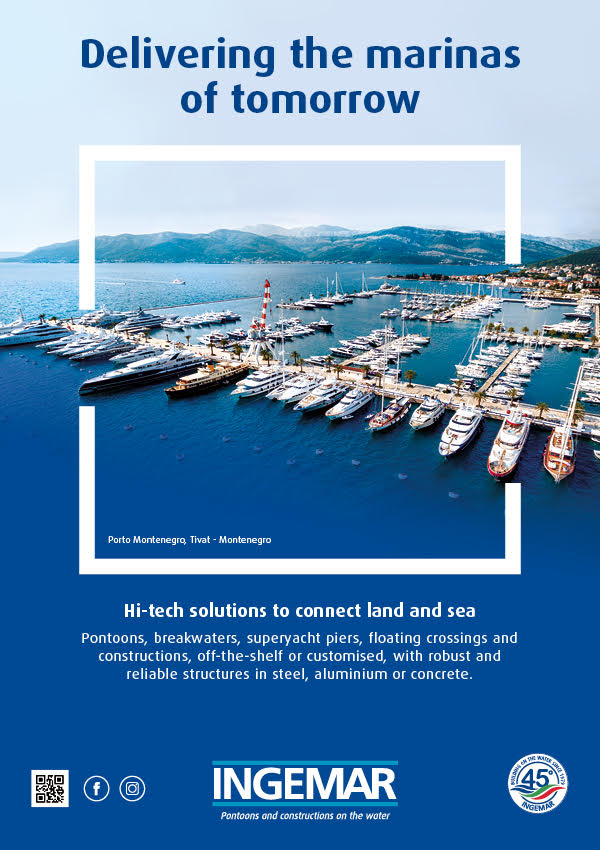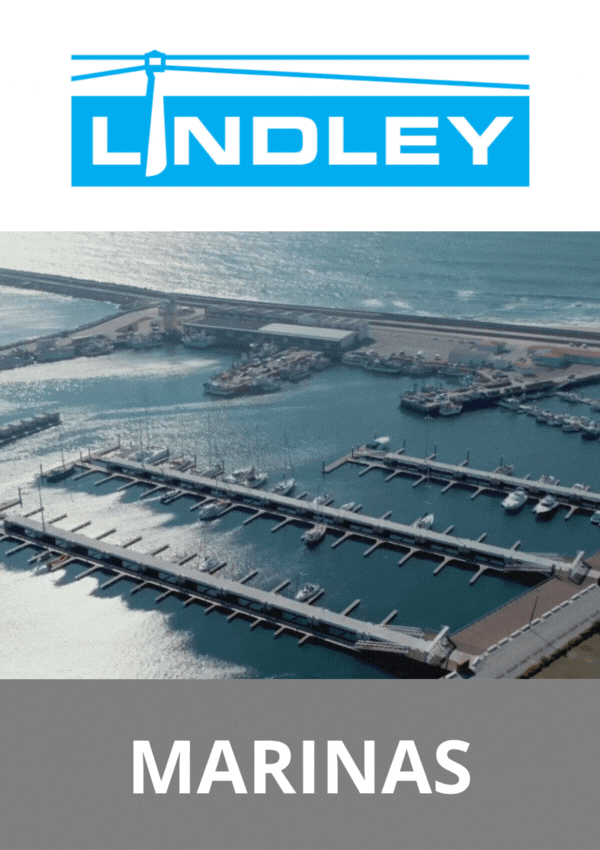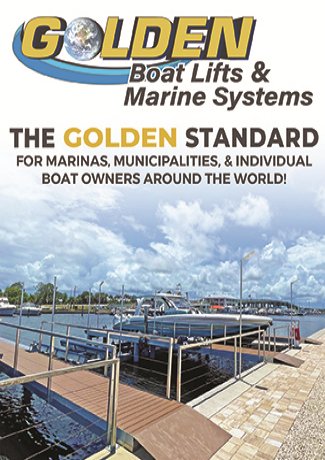South Island gem for boating community
Marinas are rarely built in New Zealand’s beautiful South Island and rarest of all in the south west – where the Southern Alps give dramatic backdrop to Queenstown and the dog leg-shaped Lake Wakatipu. Developing Queenstown Marina has been a long thought through and challenging process but the result is a new community hub for the lake with unique features and room for expansion.

Queenstown Marina
“As frustrating as the process was, looking back we had great support from all government agencies and the local community.

Iraj Barabi
Queenstown Marina – at first phase – currently offers 80 berths for a mix of vessels of 8 to 18m (26 to 59ft) and a second phase is at design stage. Bellingham Marine New Zealand (BMNZ) completed phase one and is collaborating regarding the second stage. Berths are leased primarily to locals and New Zealand residents, and all moored boats are motor boats. Barabi is working to accommodate a couple of electric boats.
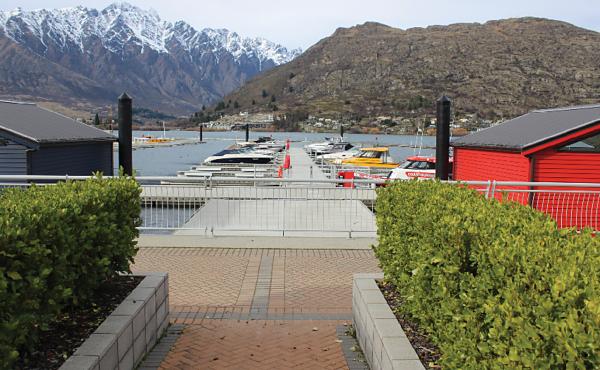
Queenstown Marina, painstakingly developed on environmentally sensitive Lake Wakatipu, is a new boating and community hub.
A challenging build
The project scope for Bellingham Marine was to provide an engineered turnkey design and build solution for new piers and attenuator, confirms BMNZ general manager Chris Lamont. The marina site is exposed to a 3.9km (2.4mi) fetch from the south west, with a wind generated wave reaching a maximum height of 1.8m (6ft). Platforms for floating buildings were also in the project brief.
“This project was unique in that it was the first substantial marina to be built on the lake, which is a gem on the New Zealand tourism circuit and fiercely protected in its waterfront development,” Lamont explains. “The location in the middle of the Southern Alps, with no port access and restricted road access, required us to look at other options outside of casting in our own manufacturing plants for the larger pontoons required for the attenuator and floating building platforms.”
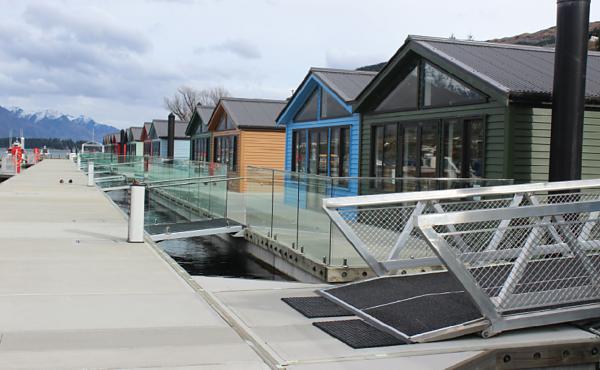
The marina’s nostalgic array of floating sheds is one of its most striking features and is perfect for a wide range of commercial purposes.
Visual impact is very important in such a sensitive environment. “BMNZ proposed an engineered telescopic pile solution during the consenting process as our preferred option,” Lamont says. “This system has been used successfully in a number of attenuators in Australia and the USA. The ‘plunger pile’ is connected to the pontoon using a pin connection and hangs inside the larger bottom driven into the lakebed.”
The attenuator pontoons measure 4m (13ft) in width with skirts, and the first 30m (98ft) has trenches for fuel and sewage pump-out lines. Unifloat marina pontoons were used to create four building platforms of 9m x 20m (29ft 6in x 66ft). They are timber walered and post-tensioned using GRP rods and have Fibre Reinforced Polymer (FRP) through bolts and glass-filled nylon nuts to reduce maintenance and corrosion. Walkways, platform and attenuator pontoons are ducted for power, water and data, and pontoon fingers have rounded boat-friendly ends. The pier walkways have a nominal width of 2.4m (8ft).
A Keco pump-out and fuel pumps offering petrol and diesel (available for marina guests and the general public) are located on the breakwater. All berths have power (16-32 amps) and water via a combination of M-Tech Sterling and Platinum pedestals. Fire hose reels with lifebuoys and fire extinguishers in M-Tech fire stations are also installed. Wi-Fi can be provided to all berths if needed.
Right for the environment
One of the most striking features of Queenstown Marina is its array of floating sheds, which add colour and character and a yesteryear ambience. “It is very unique, blends in with the environment, and is very nostalgic,” Barabi says, but uptake has been hampered by the restrictions of the pandemic. “The completion of the marina coincided with the outbreak and the border closures. Fortunately, Lakes Marina Projects was in a position to absorb the costs associated with delays in occupancy. Currently, there are many interested parties intending to lease the floating buildings but we are selective in who will occupy these buildings as we want the proper ecosystem.” An art gallery in the floating buildings for Spike, a well known marine artist, has already become a community favourite.
One of the three land-based buildings is occupied by K-Jet (jet boat rides) as anchor tenant and the other two will be for food and beverage. Other amenities, including shower rooms and toilets, and enhanced car parking facilities are underway.
All plans, on land and water, take the sensitive lake environment fully into account. “Our detailed environment policy is focused on ensuring the marina and the watercraft do not adversely affect the lake. This is done by policies, advanced equipment, such as fuel reservoir, lines and pumps, mitigation and routine inspections to ensure functionality of systems and structures plus regular lake bed inspections for invasive weeds.”
There are no further plans to develop any landside structures but the design phase of stage two is progressing. “With the data generated since the marina became operational and the input we have received from the boaties, we are finalising the berth size mix. Stage two will complement and expand the berth offerings by another 100 berths. We expect construction to begin next year with a completion date of 2024.”
A newbuild marina and the restrictions of a global pandemic were not a happy mix but, once opened, operation has been smooth. “The marina management is relatively pain free, mostly due to our top notch team. Our main challenge has been to keep focus on our vision and goals to keep this marina as an inviting and functioning hub that adds another dimension to this truly exceptional part of New Zealand despite external and unexpected challenges that have restricted movement and access during the last two years. And once we have accomplished our goal of building the best marina in New Zealand, the challenge of course would be to keep it at the top.”
Queenstown Marina is a stunning complement to one of New Zealand’s most scenic towns and an iconic reference for Bellingham Marine. Embraced by the local community as an additional lakeside destination and as a much-needed boating facility, it has already merged seamlessly into the lakefront scene. The future looks bright. “It is a great feeling to know people will be enjoying this marina for generations to come,” Barabi says.

